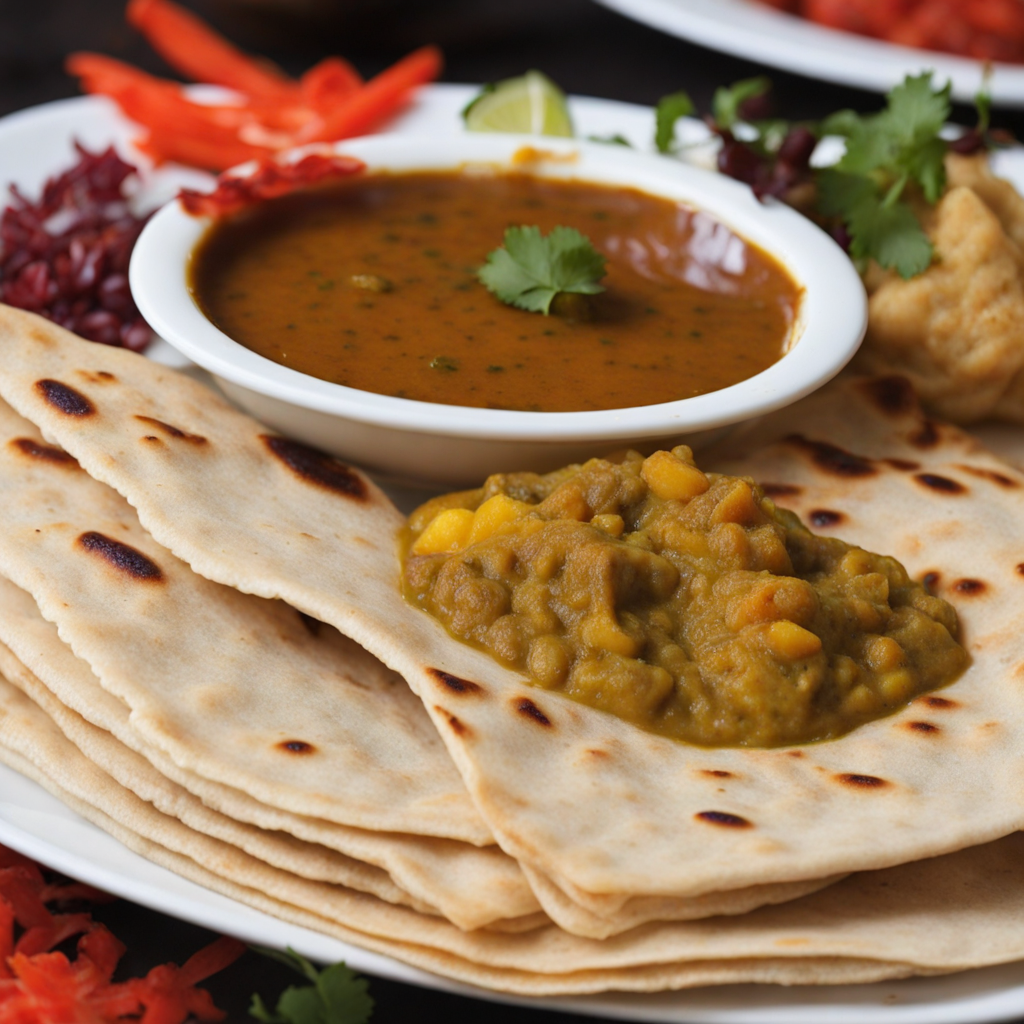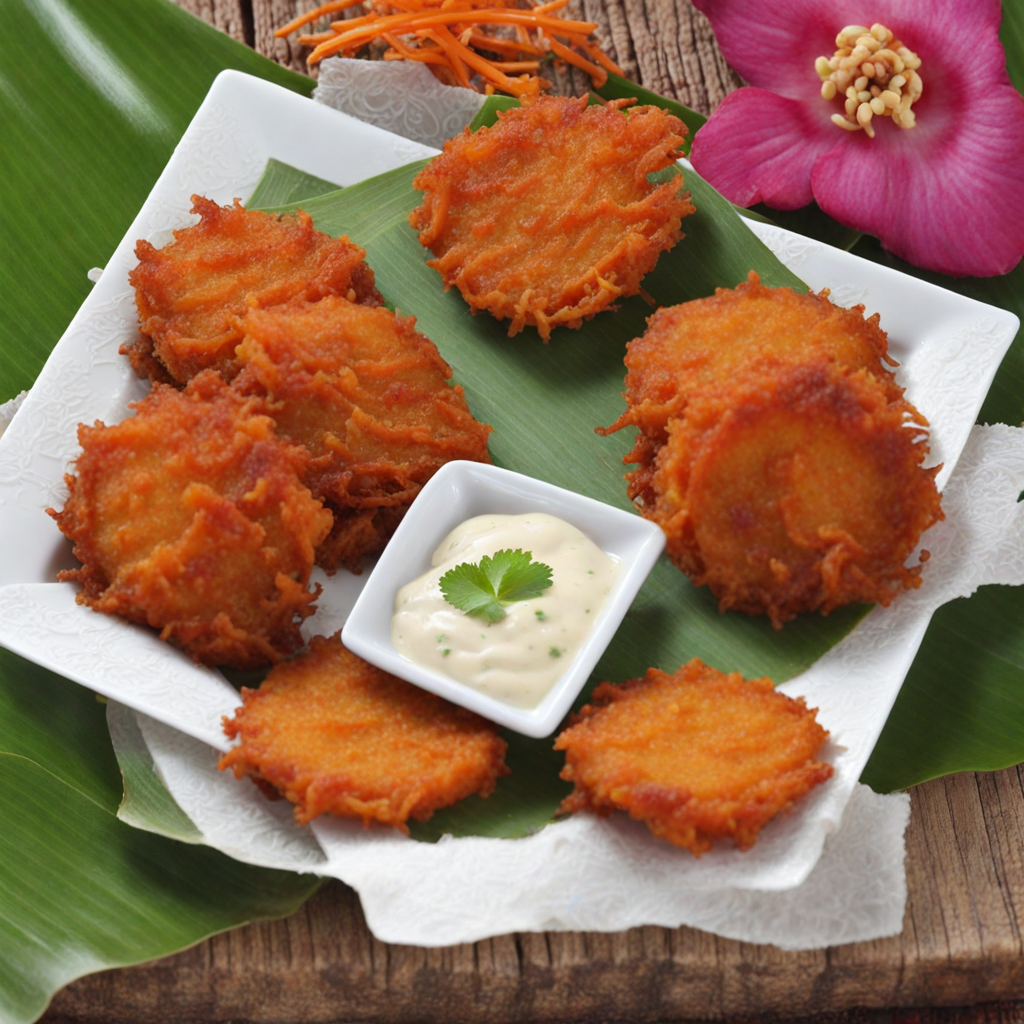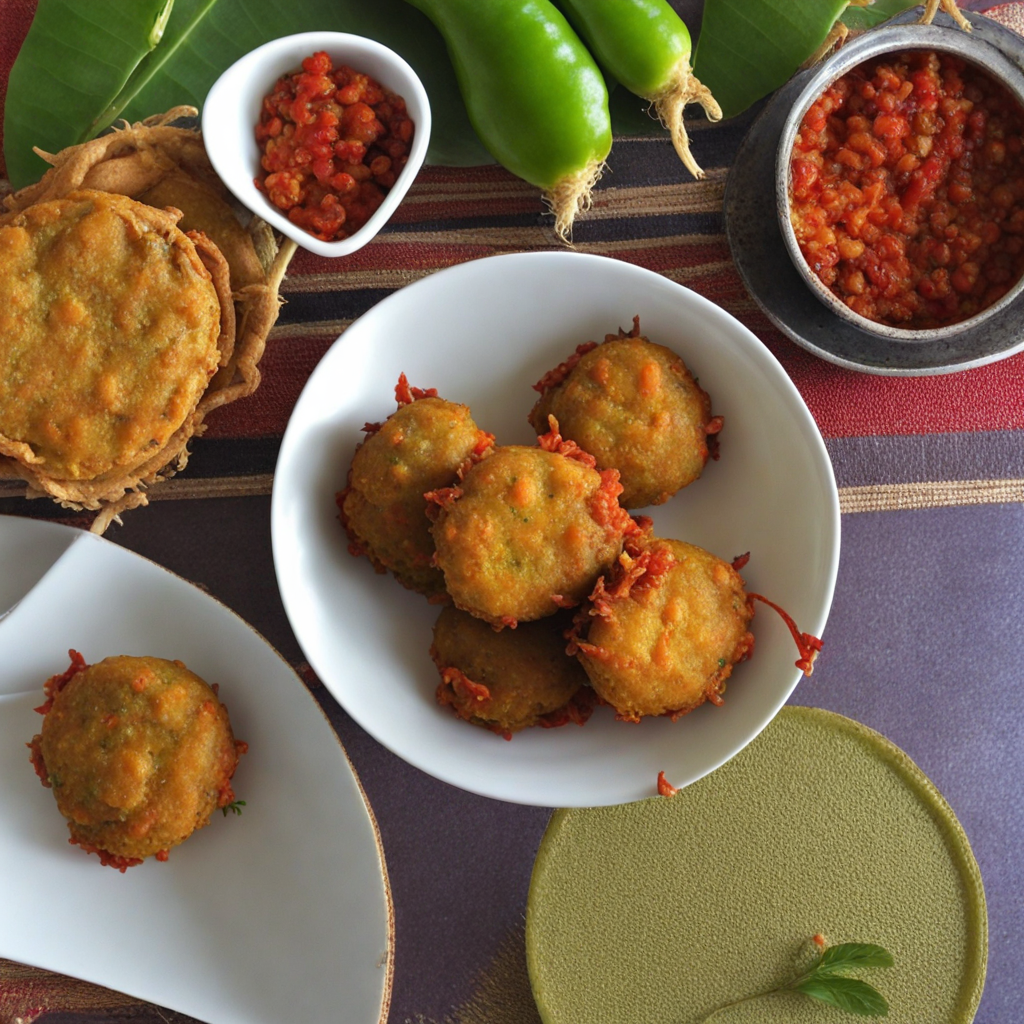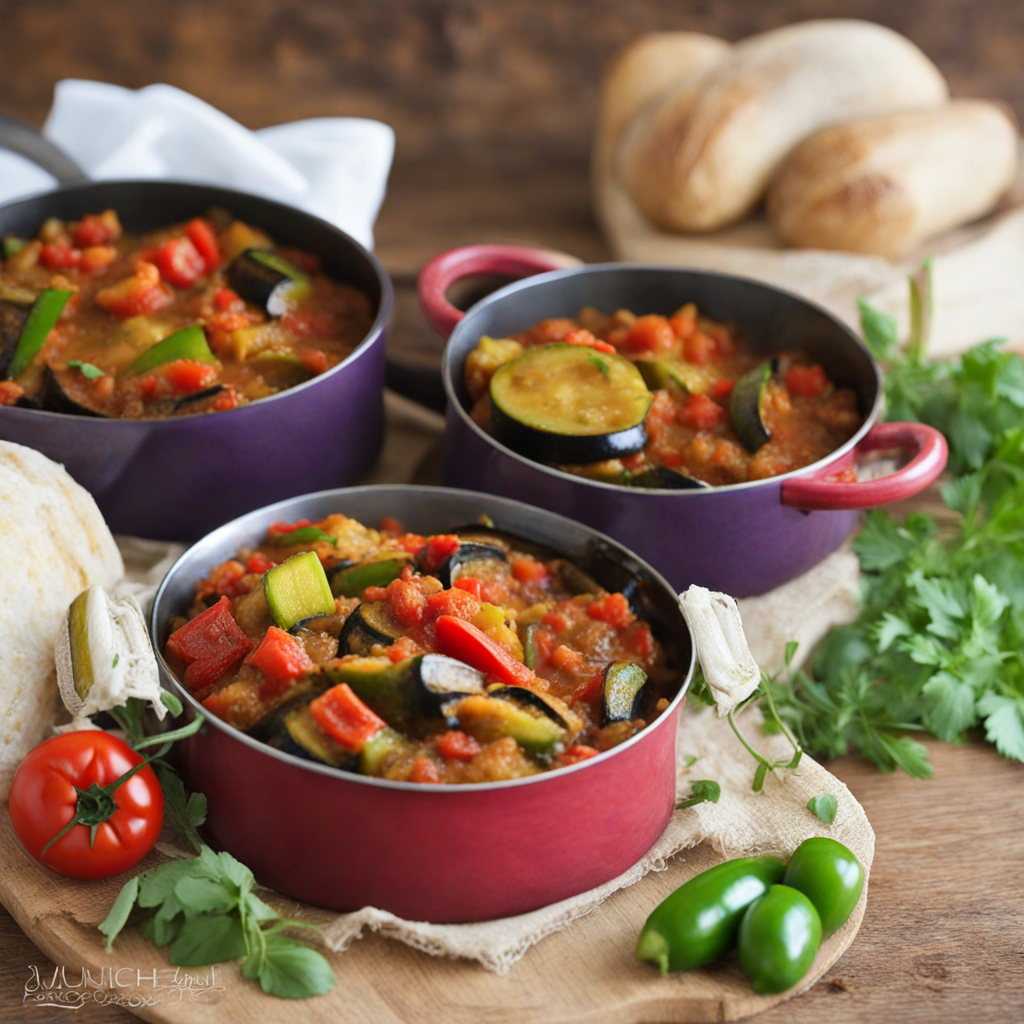Roti Chaud
Roti Chaud, a popular culinary delight from Mauritius, is a flatbread that has garnered affection from both locals and visitors alike. This traditional dish, often enjoyed as a street food, reflects the rich cultural heritage of the island, where various influences converge to create a unique gastronomic experience. The name "Roti Chaud" translates to "hot bread," aptly describing its fresh, warm nature when served. Historically, Roti Chaud has its roots in the Indian community of Mauritius, where it was initially prepared by Indian immigrants who brought their culinary traditions with them. Over time, this simple yet versatile bread has evolved, blending with local flavors and ingredients, making it an integral part of Mauritian cuisine. The bread is often associated with the vibrant street food culture, where vendors skillfully prepare it in open-air kitchens, attracting crowds with the tantalizing aroma of freshly cooked bread. The flavor profile of Roti Chaud is subtle yet satisfying. The bread has a slightly chewy texture, with a crisp exterior that gives way to a soft, airy interior. When served hot, it has a comforting warmth that enhances its flavor. While Roti Chaud is delicious on its own, it is frequently accompanied by a variety of fillings or sides, such as spicy curries, chutneys, or a simple bowl of lentils. The combination of flavors and textures creates a harmonious balance, making it a beloved staple in many households. Preparation of Roti Chaud is a straightforward process that highlights
How It Became This Dish
Roti Chaud: A Culinary Journey Through Mauritius #### Origins Roti Chaud, a beloved flatbread in Mauritius, has roots that intertwine with the island's rich and diverse cultural tapestry. Mauritius, a small island nation in the Indian Ocean, has long been a crossroads of different cultures due to its strategic location along ancient trade routes. The island's food history reflects this melting pot, influenced by Indian, African, Chinese, and European cuisines. The origins of Roti Chaud can be traced back to the Indian indentured laborers who arrived in Mauritius in the 19th century. After the abolition of slavery in 1835, the British colonial government sought labor to cultivate sugar cane, leading to the importation of thousands of Indian workers. These laborers brought with them their culinary traditions, including various types of flatbreads. Among them was the concept of "roti," a staple in many Indian households, which quickly found its place in Mauritian cuisine. Roti Chaud, meaning "hot roti" in Mauritian Creole, is a simple yet delicious flatbread made from wheat flour, water, and salt. Traditionally cooked on a flat griddle, or "tawa," the roti is often served hot and soft, making it an ideal accompaniment to various dishes. #### Cultural Significance Roti Chaud has transcended its origins to become a symbol of Mauritian identity and unity. The dish is enjoyed across different communities, making it a quintessential part of the island's culinary landscape. It serves not only as a staple food but also as a vehicle for social interaction and cultural exchange. In Mauritian households, Roti Chaud is often prepared daily and is a common feature at family gatherings and celebrations. It is typically served with a variety of accompaniments, such as curries, chutneys, and pickles, reflecting the island's multicultural heritage. The communal aspect of preparing and sharing roti fosters connections among family members and friends, reinforcing the importance of food in the social fabric of Mauritian life. The flatbread also holds a special place during festivals and religious celebrations. For instance, during the Hindu festival of Diwali, families gather to prepare an array of dishes, including Roti Chaud, which is enjoyed alongside sweets and other festive foods. This act of cooking together not only strengthens familial bonds but also perpetuates cultural traditions. #### Development Over Time As Mauritius evolved, so too did the preparation and consumption of Roti Chaud. The dish has adapted to local tastes and ingredients, incorporating elements from the island's diverse culinary influences. Over the years, various regional variations of roti have emerged, showcasing the creativity and resourcefulness of Mauritian cooks. One notable variation is "Roti Kebab," which involves the filling of Roti Chaud with spiced meats, vegetables, or lentils, creating a portable meal that reflects the fast-paced lifestyle of modern Mauritians. This adaptation has made Roti Chaud a popular street food item, often sold by vendors who prepare it fresh in front of customers. The convenience and flavor of Roti Kebab have contributed to its rise in popularity, especially among the younger generation. The rise of food trucks and casual dining establishments in Mauritius has further popularized Roti Chaud, leading to creative interpretations of the traditional flatbread. Chefs and home cooks alike experiment with fillings, incorporating local ingredients such as fish, seafood, and tropical vegetables. This evolution has made Roti Chaud a versatile dish, able to cater to a wide range of tastes and preferences. In recent years, there has also been a growing interest in artisanal and traditional food practices, leading to a revival of more authentic methods of preparing Roti Chaud. Many chefs are returning to the roots of the dish, emphasizing the importance of using high-quality, locally sourced ingredients and traditional cooking techniques. This movement not only honors the heritage of Roti Chaud but also supports local farmers and producers. #### Roti Chaud in the Global Context The globalization of food culture has also played a role in the evolution of Roti Chaud. As Mauritian communities have spread across the globe, so too has their cuisine. In countries with significant Mauritian diasporas, such as France, the United Kingdom, and Australia, Roti Chaud has found a new audience. Restaurants and food stalls specializing in Mauritian cuisine have emerged, introducing this delectable flatbread to new palates. Moreover, the increasing interest in ethnic and international cuisines has led food enthusiasts to seek out authentic Mauritian dishes, including Roti Chaud. Cooking classes, food festivals, and cultural events often feature this flatbread, allowing people to experience its preparation and flavors firsthand. As a result, Roti Chaud has gained recognition beyond its local context, becoming a symbol of Mauritius's culinary heritage on the global stage. #### Conclusion Roti Chaud is more than just a flatbread; it is a reflection of the cultural diversity and historical legacy of Mauritius. From its origins among Indian laborers to its status as a symbol of Mauritian identity, Roti Chaud has evolved while retaining its significance as a staple food that brings people together. Whether enjoyed at family gatherings, street food stalls, or international restaurants, Roti Chaud continues to delight palates and foster connections across generations and cultures. As Mauritius navigates the complexities of modernity and globalization, Roti Chaud stands as a testament to the island's rich food heritage. It serves as a reminder of the power of food to unite people, celebrate cultural diversity, and preserve history. In every bite of this warm, soft flatbread, one can taste the stories of a nation shaped by its people and their shared love for food.
You may like
Discover local flavors from Mauritius







